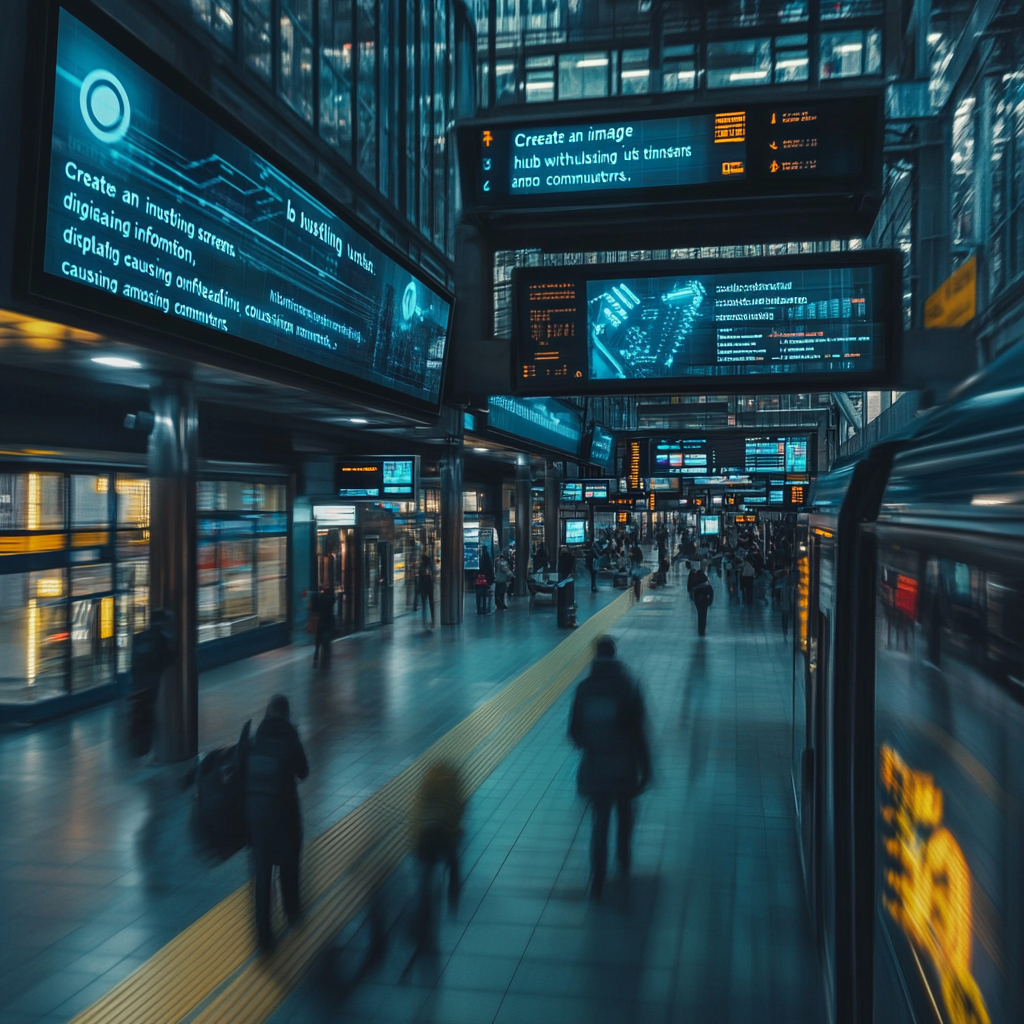
“Disinformation as a Threat to Urban Transit Systems”
In the electrifying dance of modern urban transit, where millions of lives synchronize to the tick-tock of data-driven schedules, the last thing anyone needs is a sinister cloud of weaponized disinformation. You might think of it as a dark shadow lurking behind the glimmering screens of our smartphones, poised to wreak havoc with a mere click. It's the new kid on the block, and it’s quite the troublemaker, capable of derailing an entire network faster than you can say “I missed my train.”
Urban transit systems – think the impressive Port Authority Trans-Hudson (PATH) network, which hustles and bustles with over 200,000 daily riders – are delicate ecosystems. A network of metal and machines, intertwined with the lives of countless individuals, who rely on it not just for mobility but for the cadence of their daily routines. All those trains, buses, and assorted chariots of the modern world depend heavily on the lifeblood of accurate information flowing effortlessly. But as we dive deeper into our digital age, a new menace emerges: the threatening specter of manipulated data.
Listen closely, for the vulnerability of urban transit lies not only in its intricate, complex design but also in its susceptibility to disruption. One single act of disinformation can yank the emergency brake on a well-oiled machine, causing chaos that ripples outward with an energy rivaling a concert crowd when the lights dim. It doesn’t take much—a fleeting false report here, an exaggerated rumor there—and like a game of telephone gone horribly wrong, panic ensues. Southern commuters skirt down the subway stairs only to find their train is 20 minutes delayed, and an hour later, they learn that the whole fiasco was based on a false bomb threat. Poof. Just like that, an integral element of urban life grinds to a halt.
The impact? It’s staggering. According to studies, insignificant delays can amass into monumental inconveniences, with the possibility of adding up to 16,441 minutes of collective passenger irritation—yes, that’s a number that collapses the whole idea of commuting into a quagmire of frustration. Imagine our unfortunate commuter standing at the station, contemplating their life choices—sure, they're contemplating their next ride but still feeling the weight of lost time. To top it all off, with each false alarm, those riders start raiding their wallets, spending an average of $18.13 to navigate around hiccups created by someone’s malicious click. Urban transit becomes an expensive affair, and trust me, nobody wants to be the person who oversaw that chaotic ballet of confusion.
Now let’s dive into what the folks at Stevens Institute of Technology and the University of Oklahoma discovered when they put on their detective hats and employed advanced AI and natural language processing (try saying that three times fast) to unearth the devious impact of disinformation on the PATH network. They initiated a deep dive into scenarios that could trigger disruption—everything from service delays to bomb scares. Their analysis revealed airport-level panic unspooling from mere whispers. A false report of an unattended suitcase could flutter through the network like a gust of cold wind and have absolutely catastrophic consequences, like a chain reaction through your favorite domino setup.
Using computer models built on real-world ridership data, they were able to detail how these disruptions unfold from their inception, breaking down how delays catalyze greater delays. It’s a chain reaction, folks—a dominoes don’t just fall; they tumble and roll into mayhem that requires much more than a mere mop-up operation from transit authorities.
In response, urban transit administrators are advised to ditch the reactive mode that exposes them to wild misinformation. What’s the magic trick? Verification. If rapid measures are employed to verify reports of threats, it can counter what might initially seem like chaos. That means having pairs of vigilant eyes on the ground, ready to ascertain the veracity of alarming claims before a single alarm bell starts ringing.
And let’s sprinkle in some nifty AI tools, shall we? These advanced technologies can help cities keep their ear to the ground, monitoring social media chatter and dispatch data to anticipate disruptions. Think of it as urban transit systems donning a figurative cape, transforming them into vigilant superheroes ready to combat misinformation before it spreads like wildfire.
Moving forward, the research by Stevens Institute and Oklahoma is a clarion call—not just for academic circles, but for cities worldwide. It sheds light on the pressing need for innovation, teamwork, and a staunch resolve to outsmart the shadows of misinformation. They’re not just dealing with tweets and memes; they’re outlining proactive strategies that can bolster public transit networks against the never-ending onslaught of misinformation.
The goal is crystal clear: preventative strategies. We must create systems that are resilient, agile, and anathema to the chaos inflicted by false reports. By putting a priority on accurate communication and harnessing the potential of technology, our beloved public transit systems can become bastions of reliability in this fast-paced digital age.
So, here’s your chance to ensure you’re on the front lines—interested in learning more about what’s happening in urban transit and how it’s continually evolving? Keep your finger on the pulse of the latest news about neural networks and automation. Want to stay in the loop? Join us on our Telegram channel: @channel_neirotoken.
Remember, knowing is half the battle. Equip yourself with knowledge and gear up for the ride because information isn't just a commodity in today’s world; it's a superpower.

